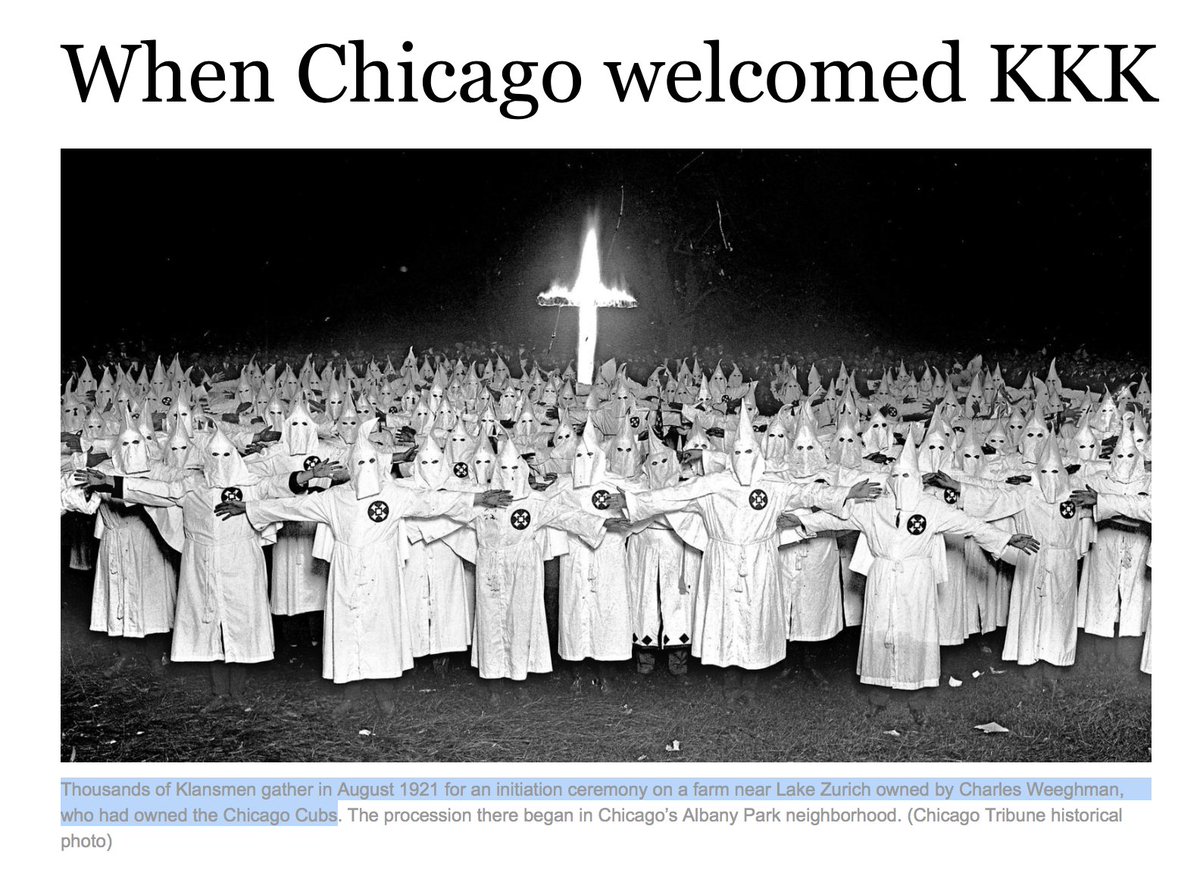You've probably seen a lot of these in recent years. Here's one for Detroit, courtesy of Detroit Future City. nextcity.org/daily/entry/un…

For example, here's Houston:
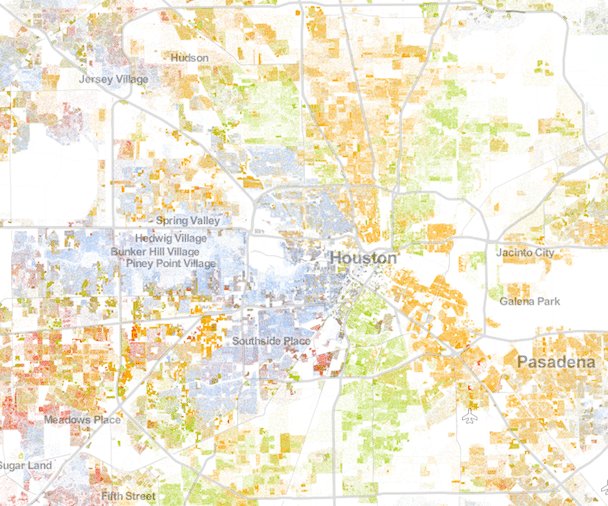
In fact, these dot-maps are often cited as evidence of how segregated our supposedly diverse cities actually are. citylab.com/equity/2013/08…
First, it's hard to tell the difference, visually, between higher one-race population density and a racially mixed area.
A darker shade of orange can look very similar to orange mixed with green.
In other words, we tend to look at maps like this and just see big patches of orange, blue, or purple.

But each of these circles looks like a jumble of purple and blue dots, mixed together!

It's not just a few areas that are more integrated than a glance at the whole map would indicate.
It's most of the map.
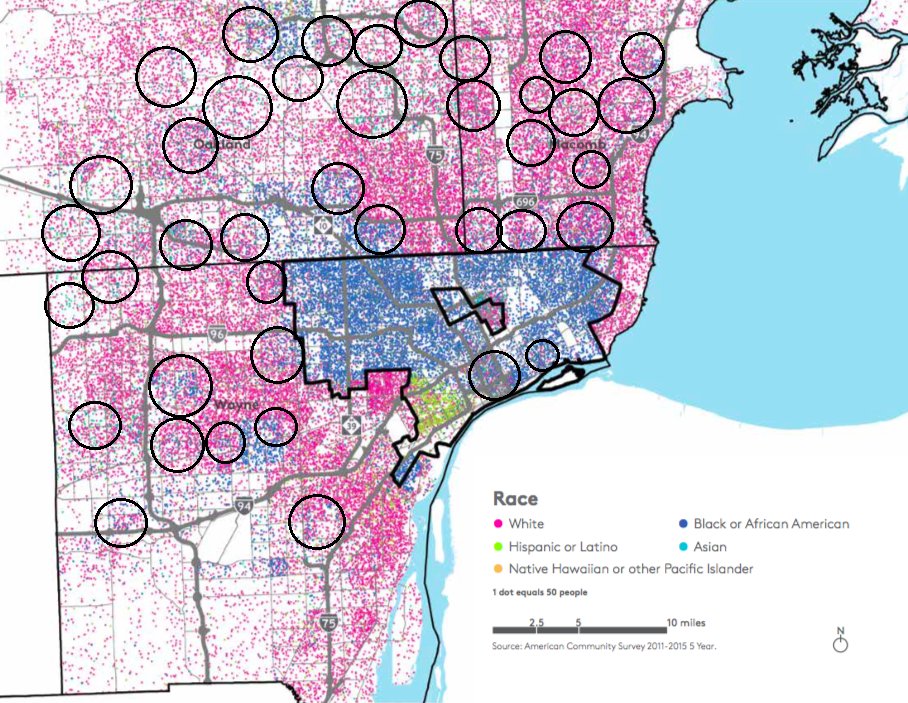
Again, each circle looks like a multicolored jumble. But without the circles, we only see big single-color swathes.
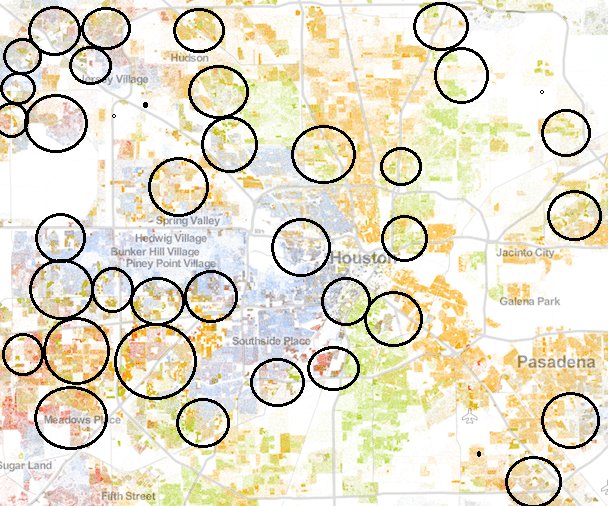
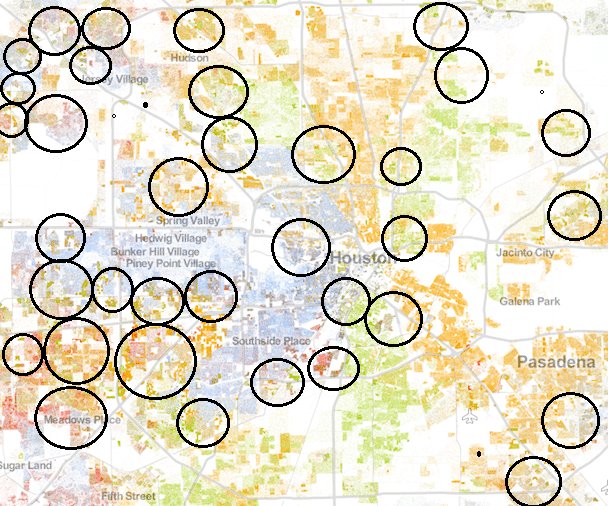
The point here is that using these color maps TRICKS THE HUMAN EYE at any resolution!
There are plenty of numerical measures of segregation, all of them with their advantages and disadvantages.
Read here: census.gov/hhes/www/housi…
And there are many levels of resolution to apply these to - blocks, neighborhoods, Census tracts, ZIP codes.
I believe that these racial dot-maps are not one of those times.
People who write about cities should be more skeptical about these maps. (cc @CityLab)
(end)
It's not.
The point is to show that we should be using numbers, not dot-maps, to measure segregation.








